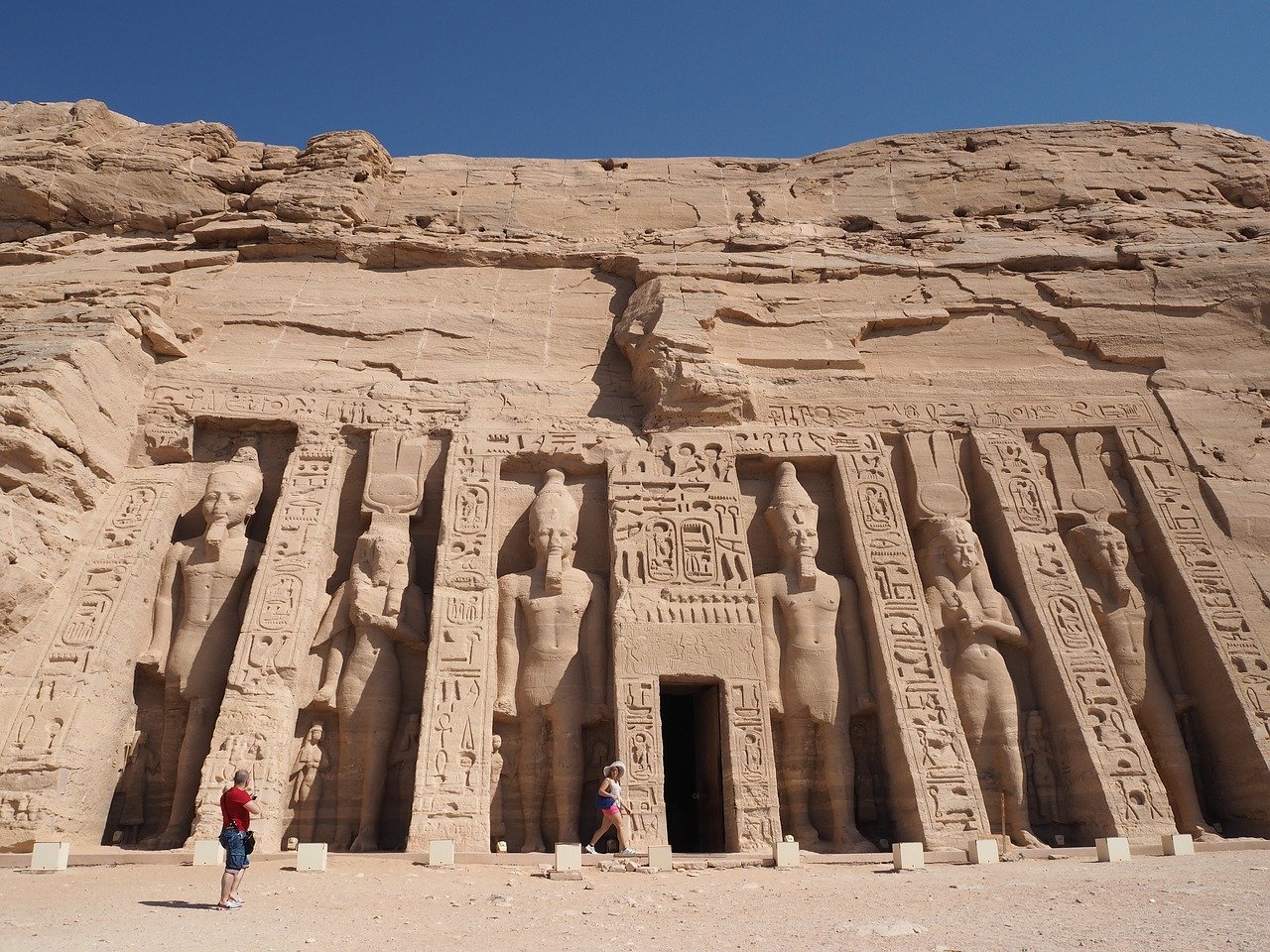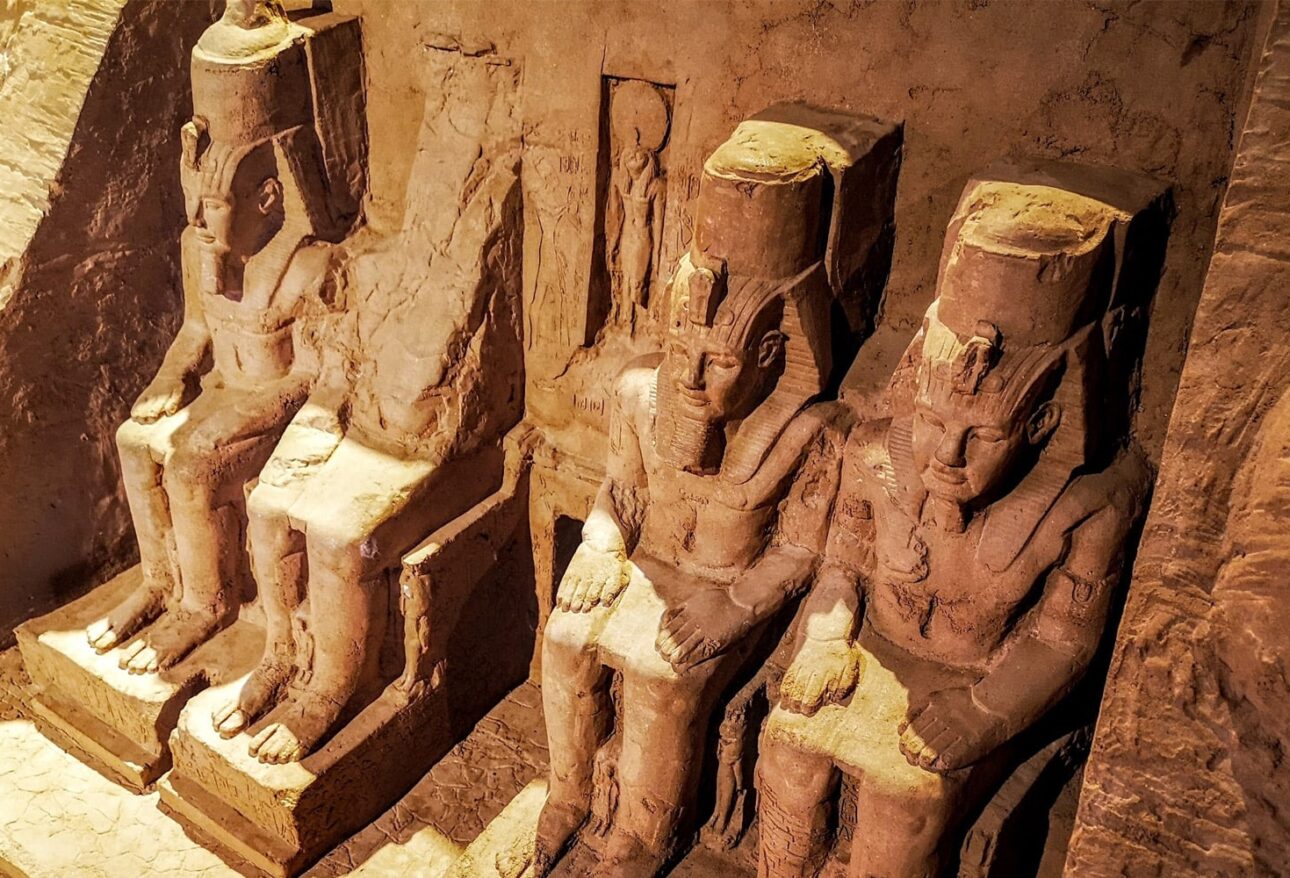The most impressive of the landmarks Ramses II constructed is Abu Simbel Temples. It is both the ideal illustration of the desire of this present pharaoh’s rule and a model representation for modern designing in its time. The whole sanctuary was relocated from its unique area and lifted piece by piece to its present site by a global UNESCO group to save due to an overflow of Aswan High Dam.
The gigantic stone sculptures that beauty the veneer is Pharaoh Ramses II’s endeavor to accomplish everlasting status. It has worked. Today, guests here still extend their necks in dismay at the behemoth sanctuaries, similarly as the pharaoh’s subjects would have done when the sanctuaries were first raised.
Abu Simbel Temples History
During his rule, Ramesses II started a big structure program all through Egypt and Nubia, which Egypt controlled. Nubia was vital to the Egyptians since it was a wellspring of gold and numerous other valuable exchange products. He fabricated a few fabulous sanctuaries there to present for the Nubians Egypt’s strength and Egyptianize individuals of Nubia.
The most conspicuous sanctuaries are the ruck-cut sanctuaries close to the cutting-edge town of Abu Simbel, at the boundary between Lower Nubia and Upper Nubia. There are two sanctuaries, the Great Temple, devoted to Ramesses II himself, and the Small Temple committed to his main spouse Queen Nefertari. Development of the sanctuary complex began in roughly 1263 BC and went on for around 21 years.
Location and Climate
Abu Simbel is in southern Egypt, not a long way from the boundary with Sudan. It is officially controlled by the Aswan Governorate. The closest city, Wadi Halfa, is found 66 km southwest of Abu Simbel. Like the Temple of Abu Simbel, the city was moved onto the higher ground because of the flooding brought about by the filling of the repository.
There is a highway through the Libyan Desert that connects Abu Simbel to Aswan. It is utilized dominatingly by visit transports carrying guests to the Abu Simbel sanctuaries; however, it likewise has significance for the water system projects in the pieces of the Desert arranged close to the repository.
With hot sunny days and having no rain, Abu Simbel is a completely hot and dry district. During summer days, the thermometer easily shows at least 39ºC almost every day, and it can rise to 49ºC. So, as we expect from a dessert, during nights, the temperature may fall under 22 °C. Winters are gentle with highs around 26 °C (78.8 °F) when temperatures can in some cases fall under 9 °C (48.2 °F) around evening time.
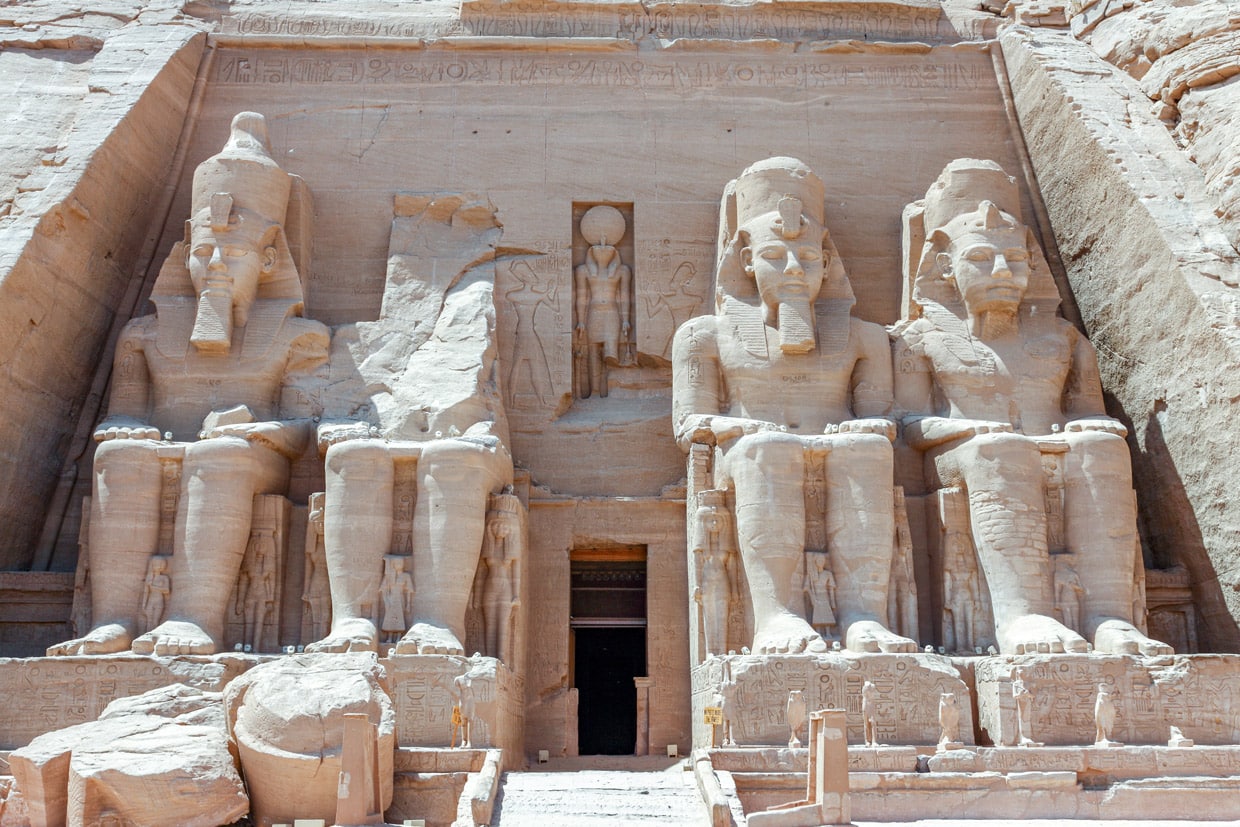
Abu Simbel Relocation
World Heritage is a basic thought, however a solstitial one – that the world hosts a social and common legacy of widespread worth, which humankind should secure together, as its resolute inheritance. UNESCO perceives social and important destinations of extraordinary general worth and ensures they serve all people around the world. Saving the sanctuaries of Egypt, stone by stone, the Abu Simbel sanctuary in the mid-1960s was the principal act to perceive this thought.
UNESCO started a global defense effort to save landmarks in Nubia from being overflowed by the waters of Lake Nasser. The development of the Aswan High Dam in Egypt caused remarkable worldwide notice to save this global legacy. On that occasion, everybody thought they needed to pick among culture and improvement, between prospering harvests and the hints of a magnificent history. UNESCO has given us the two sides of the same coin.
Between 1963 and 1968, a labor force and a global group of specialists and researchers, upheld by assets from over 51 nations, burrowed away from the highest point of the bluff and dismantled the two sanctuaries, recreating them on the high ground above 61 meters over their past site. In that time, more than 15,800 blocks were moved. In 1979, Abu Simbel and other close-by landmarks were by and large assigned a UNESCO World Heritage site.
There are two separate temples at the site. The bigger one is committed to Ra-Harakhty, Ptah, and Amun, Egypt’s three state divinities of the time, and highlights four huge sculptures of Ramesses II in the veneer. The more modest sanctuary is devoted to the goddess Hathor, embodied by Nefertari. She was Ramesses’ most adored wife. This complex is now accessible for visiting or photographing.
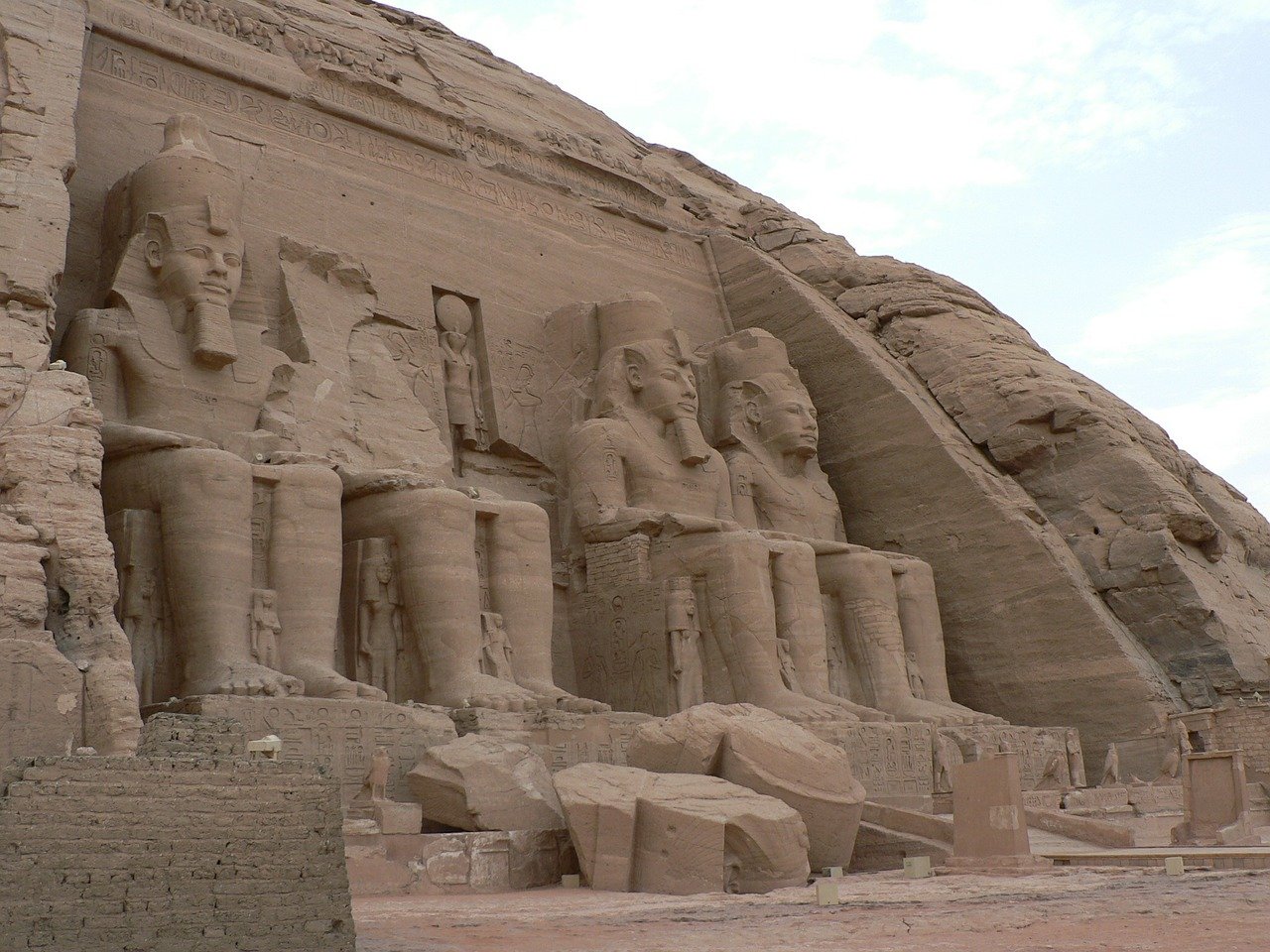
Great Temple
The Great Temple, which required around twenty years to fabricate, was finished around year 24 of the rule of Ramesses the Great. It was committed to the divine beings Amun, Ra-Horakhty, and Ptah, just as to the idolized Ramesses himself. In its time, it was the biggest temple and one of the significant ones in Egypt.
Entrance
Four statues flank the entrance; each one is a sign of Ramesses II situated on the royal seat. The left statue was harmed in an earthquake, making the head and middle fall away; these fallen pieces were not reestablished to the sculpture during the movement, yet positioned at the sculpture’s feet were initially found. There are ten smaller statues close to Ramesses’ legs which present his family, like his mother, queen Mut-Tuy. Others are his wife and eight children.
The facade behind the statues is 34 meters high and 30 meters wide. It conveys a frieze portraying 22 mandrills adoring the rising sun with raised arms. The passage entryway itself is conquered by pictures of Ramesses II revering the bird of prey-headed Ra Horakhty, whose sculpture remains in an enormous niche.
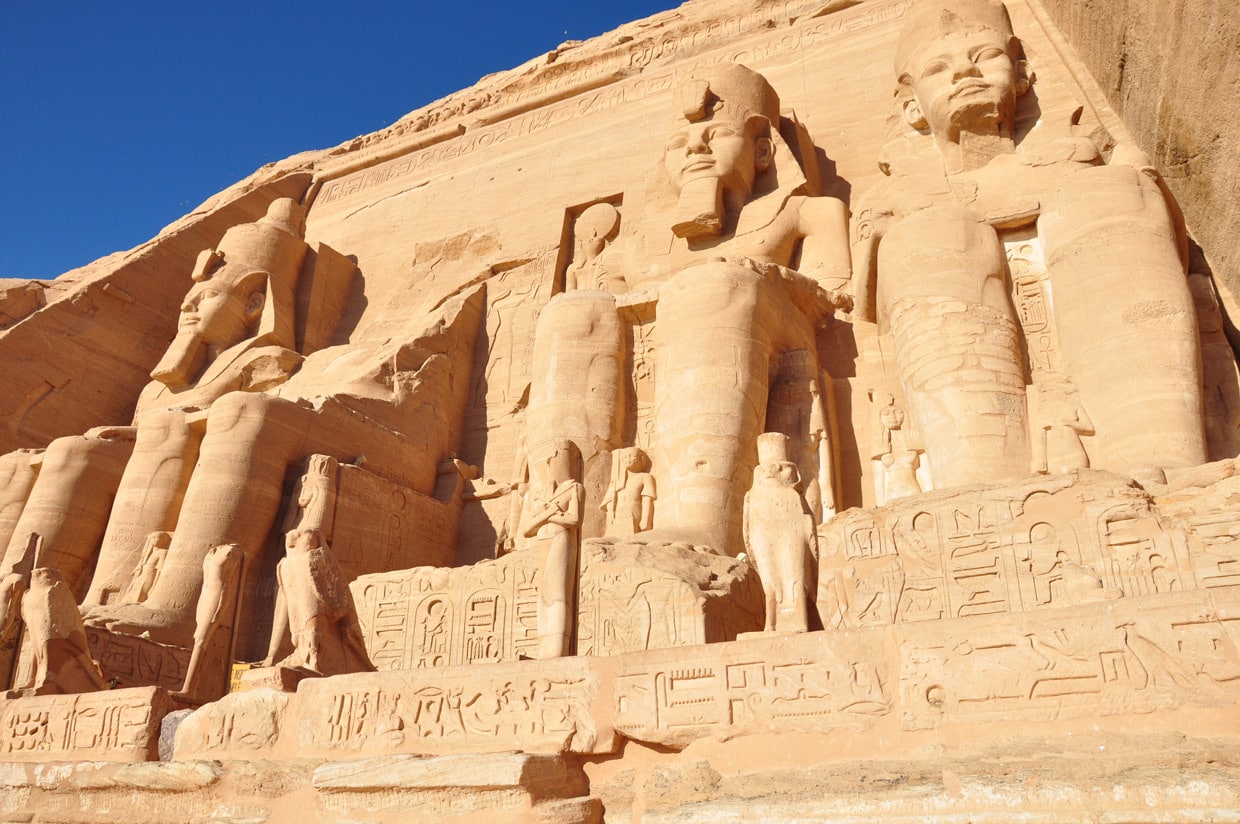
Interior
The inward section of the sanctuary has the very three-sided design that most old Egyptian sanctuaries follow, with rooms diminishing in size from the passageway to the temple. The sanctuary is intricate in structure and very surprising on account of its many side chambers.
The hypostyle corridor (also called a pronaos) is 19 meters in length and 17 meters wide and is upheld by eight tremendous Osiris columns. Osiris is the god of fruitfulness, horticulture, eternity, the dead, restoration, life, and vegetation to demonstrate the never-ending nature of the pharaoh.
The bas-reliefs on the dividers of the pronaos portray fight scenes in the military missions that Ramesses pursued. This was one of the most important wars during his ruling era. The most celebrated relief shows the lord on his chariot shooting bolts against his escaping foes, who are being taken as prisoners.
One enters the second pillared corridor from the hypostyle lobby, which has four columns designed with delightful scenes of donation to the Egyptian Gods.
Small Temple
There is another temple at about 105m northeast of the great one, which is the temple of Hathor and Nefertari. It’s also known as the Small Temple. Ramesses II devoted this sanctuary to the Egyptian first lady. It’s not the first time in history that a pharaoh has built a temple for his wife.
Years before, Akhenaton devoted a temple to his famous, powerful royal wife, Nefertiti. The stone-cut facade is embellished with two enormous sculptures that are isolated by the huge passage. The sculptures, marginally over 11 m high, are of the Ramesses II and Nefertari.
At both sides of the entry, again, there are two sculptures of the king with royal symbols like a double crown in his hand. Amazingly, the sculpture of Nefertari is as big as Ramesses II one. It’s rare because usually, the sculptures of the queens remained close to those of the pharaoh yet were never taller than his knees.
Ramesses went to Abu Simbel with the queen in the 24th year of his rule. Like the other temples, there are little sculptures of princes and princesses close to the Ramesses and Nefertari. The arrangement of the Small Temple is a simplified version of that of the Great Temple.

A Sacrosanct Site
The area of the site was sacrosanct to Hathor well before the sanctuaries were worked there and were painstakingly picked by Ramesses for this very explanation. Ramesses is perceived as a divine being among different divine beings in the two sanctuaries, and his decision of a generally holy region would have fortified this impression among Egyptians.
The sanctuaries are likewise lined up with the east so that, double a year, on 21 February and 21 October, the sun sparkles straightforwardly into The Great Temple to enlighten the sculptures of Ramesses and Amun. The dates are thought to relate to Ramesses’ birthday and royal celebration.
The arrangement of sacrosanct constructions with the position of the sun was usual all through the antiquated world, yet The Great Temple contrasts from these different destinations, so the sculpture of the god Ptah, who remains among the others, is painstakingly situated, so it is never enlightened whenever. As Ptah was related to the Egyptian underground world, his picture was kept in shadows.
How to Get There?
By Tour Bus: Abu Simbel round trips are effortlessly organized in Aswan and are perhaps the simplest option in case you’re in a rush. Sadly, it’s disappointing that these buses leave Aswan very soon. The beginning time is generally somewhere in the range of 4 a.m. and 5 a.m. Numerous visits additionally incorporate stops at Philae Temple and the Aswan High Dam, so it’s a decent method to pack a lot of sightseeing in a day.
By Private Taxi
Outings to Abu Simbel by private taxi are one of the options. They’re best reserved through your inn or a neighborhood travel planner, as just cab drivers with a license to head out to Abu Simbel are permitted to take you. by using a private taxi, you can set off at your own assigned chance to see the sanctuaries.
Airlines
EgyptAir runs an Aswan-Abu Simbel line, of course, is the fastest method to arrive. The flight, when running, just requires 20 minutes. There are additional flights direct from Cairo.
By Public Bus
Every travel guide and lodging information in Aswan will advise you to use public transport. Transports leave once every day from the Aswan bus stop, and the excursion requires four hours. This is a decent choice in case you’re on a careful spending plan and need to remain the night in Abu Simbel.
